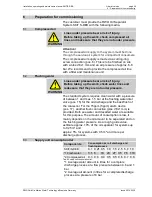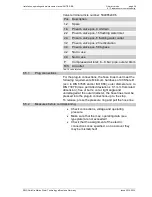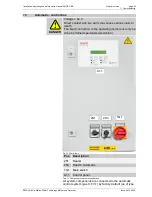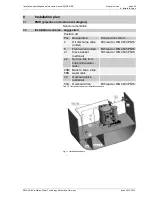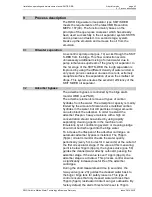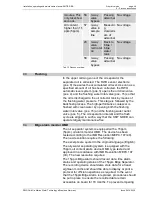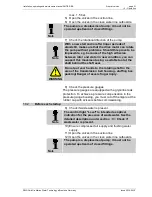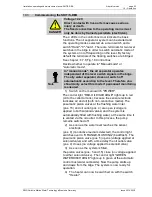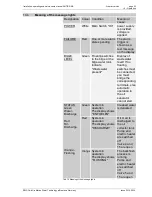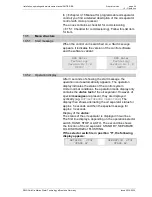
Installation, operating and maintenance manual SKIT/S-DEB
3rd print version
page 50
10 – Operation
RWO GmbH
●
Marine Water Technology
●
Bremen
●
Germany
Issue 2014-04-10
10
Oper
at
i
on
10.1
Before commissioning
Check electrical connections
1)
DANGER
Voltage > 42 V
Direct contact with live parts may cause serious
injury or death.
The fixed connection to the operating mains must
only be done by trained specialists (electrician).
DANGER
Danger of explosion
Standard plants must not be operated in explosive
areas!
Check pipe and flange connections
2)
CAUTION
Lines under pressure bear a risk of injury.
Before taking up the work, check water and
compressed air lines and make sure that they are not
under pressure.
Note
The SKIT S-DEB operates in suction mode. Make
sure that the oil separator does not suck in any air
through leaks in the suction line and/or flange
connections at the oil separator tank. Sucked-in air
will cause repetitive flushing processes. This way,
the oil separator cannot draw any wastewater and
thus cannot perform the water oil separation
properly.
Check if bilge water is present
3)
Note
The control light "Bilge Level" is intended as optical
indication for the presence of wastewater.
By factory default, the oil separator is delivered with
two bridges between the terminals X2-1 and X2-2 and
the terminals X2-3 and X2-4. The oil separator system
can only start if it is bridged.
We recommend to replace these bridges by two
floating switches (level switch bottom and level
switch top) in the bilge or the bilge water tank and
thus switch the oil separator system depending on
the level. For this purpose, both floating switches
must operate as normally open. If the level rises, they
must close one after the other, only then the oil
separator system starts. If the level falls, they open
one after the other, only then the oil separator
system stops.
Ensure compressed air supply of approx. 6-8 bar and
4)
flushing water supply ((1bar (max. 1.5 bar)). The
pressure reducer valve must be set to an output of

